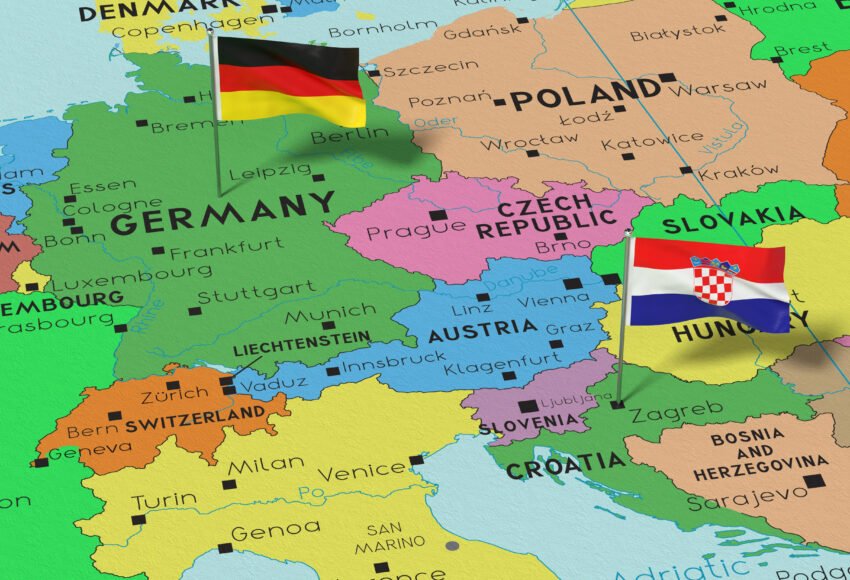
The Ultimate Guide to Schengen Visa Countries
If you’re planning a trip to Europe and are curious about Schengen visa countries, you’ve likely encountered the term “Schengen” — and if you’ve had the chance to visit Luxembourg, you might even have visited the charming village of Schengen itself. Tucked away in a picturesque corner where the borders of France, Germany, and Luxembourg meet, Schengen is more than just a quaint village. It’s the birthplace of the Schengen Agreement, which has forever changed the way we travel in Europe and beyond.
What is the Schengen Area?
The Schengen Zone is a region of Europe where internal borders have been abolished to allow for easier and more seamless travel between member states. It operates like a single state when it comes to international travel, even though external border controls are still enforced. The concept of the Schengen Area began in Schengen, Luxembourg, with the signing of the Schengen Agreement on June 14, 1985, by five European nations: Belgium, France, Germany, Luxembourg, and the Netherlands. This agreement aimed to reduce border checks between these countries, making travel between them faster and more convenient.
In 1990, this agreement was expanded with the signing of the Schengen Convention, which further strengthened the idea of a common travel area by eliminating internal border controls and establishing a unified visa policy. Since then, the Schengen Area has expanded significantly to include numerous countries, creating one of the largest and most integrated regions for travel in the world.
Schengen Visa Countries: Who is Part of the Schengen Area?
As of mid-2024, the Schengen Zone consists of 29 countries, including 25 European Union (EU) members and 4 members of the European Free Trade Association (EFTA). Here’s a breakdown of the countries that are part of the Schengen Zone:
EU Member States in the Schengen Area:
- Austria
- Belgium
- Bulgaria
- Croatia
- Czech Republic
- Denmark
- Estonia
- Finland
- France
- Germany
- Greece
- Hungary
- Italy
- Latvia
- Lithuania
- Luxembourg
- Malta
- Netherlands
- Poland
- Portugal
- Romania
- Slovakia
- Slovenia
- Spain
- Sweden
EFTA Member States in the Schengen Area:
- Iceland
- Liechtenstein
- Norway
- Switzerland
Additional Territories:
The Spanish Canary Islands and Portuguese islands of Madeira and the Azores are part of the Schengen Area, as are several overseas territories of France and the Netherlands, such as French Guiana and Aruba.
It’s important to note that the United Kingdom is not part of the Schengen Zone, and since Brexit, it is no longer a member of the EU.
Non-Schengen European Countries
There are several countries in Europe that are not part of the Schengen Area. These mainly include Eastern European nations such as:
- Albania
- Armenia
- Azerbaijan
- Belarus
- Bosnia & Herzegovina
- Georgia
- Moldova
- Montenegro
- North Macedonia
- Serbia
- Ukraine
Additionally, small European microstates like San Marino, Monaco, and Vatican City are not official Schengen members but are considered “de facto” inside the Schengen Area due to their open borders with neighboring Schengen countries.
Do You Need a Schengen Visa?
Whether or not you need a Schengen visa depends on your nationality and the purpose of your visit. Citizens of the European Union member states do not require a visa to travel to any Schengen country for stays of up to 90 days within a 180-day period.

If you are a citizen of a non-EU country but your nation has signed a visa exemption agreement with the EU, you can travel to the Schengen Area without a visa for up to 90 days. Some of the countries included in these agreements are:
- Australia
- Brazil
- Canada
- Japan
- United States
For nationals of countries that do not have a visa exemption agreement with the EU, a Schengen visa is required for entry into the Schengen Zone. This includes most countries in Africa, Asia, and the Middle East, as well as Russia, China, and India.
How to Apply for a Schengen Visa?
If you need a visa to visit the Schengen Area, the process is relatively straightforward. You must apply at the embassy or consulate of the country you plan to visit first, or the country where you will spend the most time during your stay. You will need to provide:
- A valid passport (issued within the last 10 years and valid for at least 3 months after your departure date)
- A completed visa application form
- Proof of travel insurance that meets the Schengen Area’s requirements
- Proof of accommodation and travel plans

What is Schengen Visa Insurance?
One of the key requirements for a Schengen visa is travel insurance. The insurance must cover medical emergencies, repatriation, and any unexpected events during your stay. It’s essential to have travel insurance that meets the Schengen visa requirements for a smooth application process. Samrat HR Consultancy provides comprehensive Schengen travel insurance, designed to fulfill these visa requirements, ensuring your trip remains secure.
Final Thoughts on the Schengen Zone and Travel
The Schengen Area has revolutionized travel in Europe, offering unprecedented freedom of movement for citizens and travelers alike. Whether you’re planning a holiday, a business trip, or simply exploring Europe, understanding the countries in the Schengen Zone and the visa requirements can make your journey a lot easier. If you need help navigating the Schengen visa process, seeking advice from trusted travel insurance providers like Samrat HR Consultancy can provide peace of mind during your travels.
Always stay updated on visa policies and entry requirements to ensure a seamless and enjoyable trip to the Schengen Zone.

Very useful content and please more blog write 😆😆😆
Thnaks Asmita lama! ok sure 😆